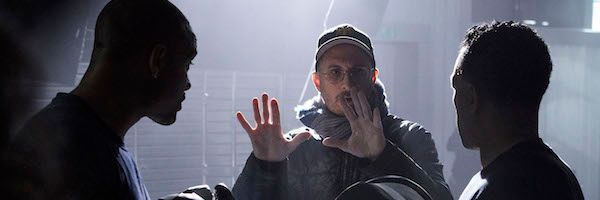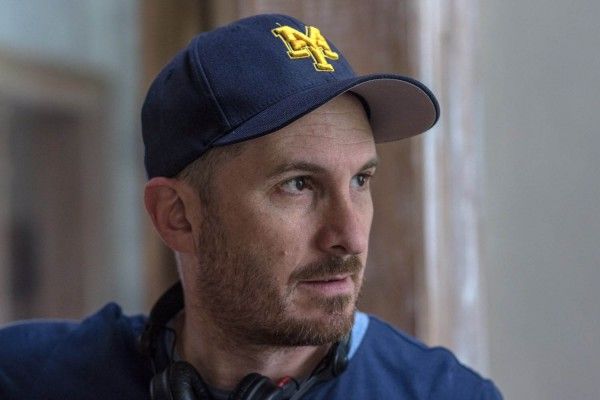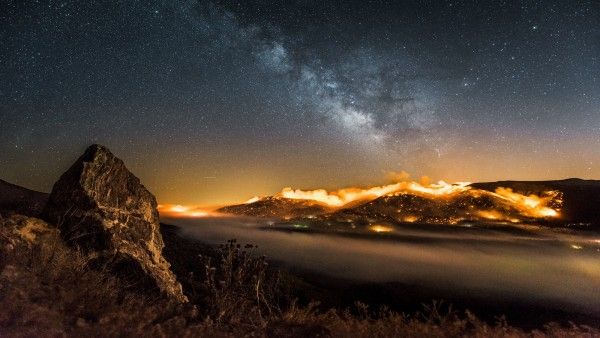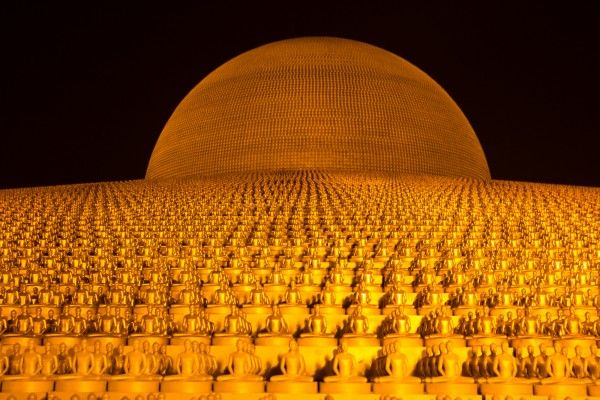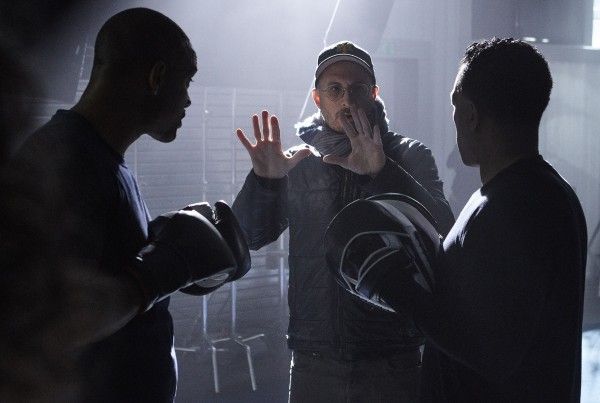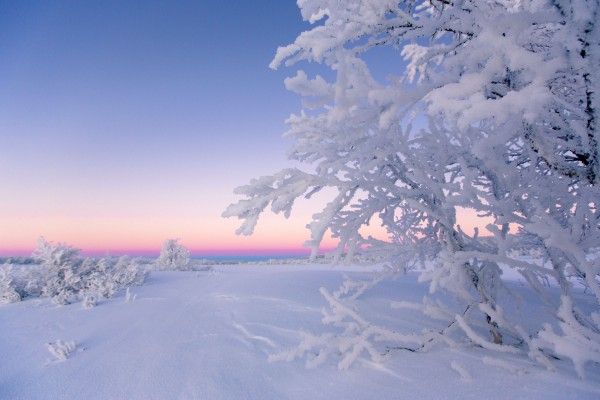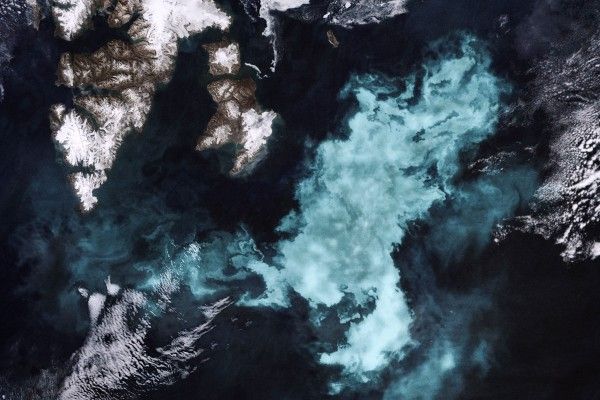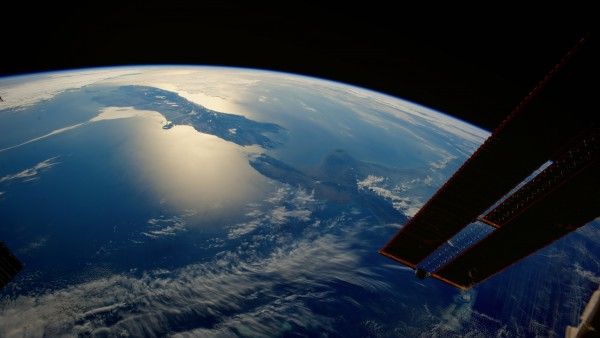From National Geographic, acclaimed filmmaker Darren Aronofsky, and award-winning producer Jane Root, the 10-part docuseries One Strange Rock -- narrated by Will Smith -- is a mind-bending journey that takes viewers through and around planet Earth, which is just a tiny speck of a planet among the vast cosmos. Redefining science and natural history filmmaking, the series was shot in 45 countries, on six continents and from outer space on the International Space Station (ISS), as it explores why life as we know it exists on this planet, brought into perspective by the astronauts that have left it behind, in order to gain insight that can be obtained no other way.
During a small roundtable interview that Collider was invited to, to promote the series debut, executive producer Darren Aronofsky talked about what made him want to tackle One Strange Rock, telling the story from the perspective of the astronauts, how mind-boggling the existence of life truly is, being born a storyteller, whether this could inspire a narrative feature for him, and the active environmental message in his most recent films.
QUESTION: What made you want to take on a TV project?
DARREN ARONOFSKY: It was NatGeo, to start. I’ve been subscribing since I was a teenager and I probably, at some point, want to be a NatGeo photographer or journalist. I still get excited, every month, when my issue comes in, to see what’s on the cover. Getting a cover for this show was definitely a bucket list moment. Being involved with that is really exciting. That’s where it started. And then, I like Nutopia because of their track record and what they’ve pulled off, and Jane Root’s work with the BBC and her history made me excited. It was exciting and it was also scary, which I always look for, to take all of the different sciences and try to blend them, and make something coherent. And then, I think what they were looking for, from me and Arif [Nurmohamed], was to create something emotional. When we stumbled on the idea of telling it from the point of view of astronauts, that opened it up for us and gave us the courage to do it.
Was there something that you learned from the astronauts that was really important for the show?
ARONOFSKY: I just go back to the overview effect, which is something I wasn’t conscience of. Even before we said, “Let’s do this with the astronauts,” we thought it was an interesting perspective. When you’re in the video game, you forget you’re in the video game, but when you look up above it and you look down on it, you can see that larger perspective. It’s something we all recognize because that pale blue dot photograph has been around a long time, but it’s still a hard thing to emotionally really grasp when you’re dealing with walking your dog, three times a day. That perspective was something I was really immediately excited by. It was like, how do we emotionally hint at it? It’s a near impossible thing to experience until you experience it, and it’s hard for them to even describe what that experience is.
Do you look at this more as a 10-installment film, or do you see it as a TV show?
ARONOFSKY: I think it’s different because it’s not a narrative project. It’s a very different art form. It’s basically taking our storytelling skills and trying to get the emotions that we get in a narrative story and finding it in intense science, and trying to corral that, so that audiences do have an emotional experience, watching this. What’s been interesting about it is that people are being affected by it, but they’re listening to some really intense, very interesting science and definitely some personal testaments of people who are examining the universe and having great challenges put in front of them, like a moment of blindness while trying to figure stuff out. It’s not really comparable for me. This was about trying to unite 150 different locations that are some of the most extreme places on the planet and unite them visually, and then narratively finding links that build over the 10 hours, so that eventually there’s a big punch. By the end, you should have a real sense of how special this home we all live together in is.
It’s mind-boggling how many factors have to come together to support life. After doing something like this, does it seem like life is more rare, or does it feel like it’s possible that there’s something more out there?
ARONOFSKY: It’s interesting because it’s been very vogue lately to say, “Oh, there’s lots of life in the universe. The big question is why it hasn’t reached us or why we haven’t made contact yet.” Some people think we have. But then, you suddenly look at all of these systems that go together, and the way that the 10-hour doc portrays it is that it’s amazing, all these different things that had to stumble together to make this grand reality happen. If we did a series on the moon and we decided to break that down, where there is no life, you could probably create some type of narrative that shows the complexity of that, that is mind-blowing, as well. Wherever you decide to put your focus, you can create a story of tremendous complexity and uniqueness. So, I don’t really have a good answer for that.
When you have a hand in making a docuseries like this, does it make you wish, at all, that you had taken a career path that had led you into space, so that you could see these things first-hand, or are you happy with being a filmmaker on land?
ARONOFSKY: I don’t know. I went parachuting and I hated it. I think I was pretty much born a storyteller. It’s definitely my art. It could have gone many different ways, but it’s gone all right. Watching a lot of tape on [the astronauts] and meeting a bunch of them, I definitely want to be invited to the reunions and cocktail parties to hang out.
Do you see this inspiring a narrative feature, for you?
ARONOFSKY: It’s probably too soon to know. A lot of the themes of One Strange Rock are not that different from my last two films, which have strong environmental messages. I don’t think an active environmental message is on the surface of One Strange Rock, but of course, it’s something that’s glorifying this planet, so there is a message there. I think Noah and mother! were very aggressively activist films, but it’s just a different way of doing it. I’m happy to be involved with this project because I think it peels the orange a different way.
You said that you feel like your last two narrative films had a very overt environmental message about taking care of the planet, but that this docu-series was not as overt. Why do you think it happened that way, instead of the reverse? Why did the non-fiction project need to be more subtle, in that regard?
ARONOFSKY: I don’t think anything needs to be, it just worked out that way. When I did Noah, the story was about a guy who’s saving the animals from the floods because of the evil mankind. What could be more timely? That is in the sacred text. That is what it says. Man had basically destroyed the planet, God was pissed off and was going to destroy everything, and one man was like, “But save the animals!” Anyone who doesn’t see an environmental message in that and thinks I changed it or interpreted it, it’s very strange to me. It’s very connected to what’s happening right now. [One Strange Rock] is different from other portraits of the Earth right now because we were just interested in the science, and we approached it truthfully to the science. In science, you don’t make a judgement beforehand. You just look at the systems that are in front of you and you’re meant to observe, and then draw conclusions. It just is.
One Strange Rock airs on Monday nights on National Geographic.

